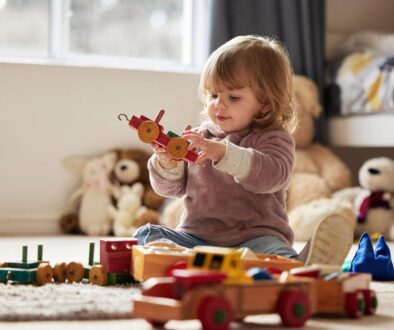Redefining Negative Labels

In today’s world it can be challenging to not put labels on things; clothing, toys, food…etc. These simplistic words are often used to describe a person, place or thing in an effort to know what to expect. However, especially with children, even harmless labels can play a role in self-esteem, behavior and can have long-lasting effects on personality.
Labels have a deep impact on our children, and we should be aware of the words we use; in both talking to them and about them. It can be easy in the heat of the moment to say things we don’t think will matter or stick with our kids. However, our words can have long lasting impact on our children. When your child hears you – whether through your words towards them, behavior towards them or overhearing conversations about them – they’ll begin to believe this is simply who they are.
Being mindful of the descriptions we give to children can make a difference in the self-esteem and self-concept that they develop. The self-fulfilling prophecy can go both ways; a child told they are mean will likely be less kind, but the opposite is also true that a child told they are helpful will be more helpful. Keeping the focus on the child’s positive traits, while avoiding negative labels, can encourage children to become the best version of themselves.
Check out these simple ways to redefine common labels to encourage a strong sense of self in children:
Bossy Vs. Natural leader
Defiant Vs. Holds strong beliefs, Bold, Determined
Demanding Vs. Knows what they want, Outspoken
Disorganized Vs. Multitasks, Pays attention to many things
Fearful Vs. Cautious, Careful
Fussy/Whiney Vs. Has strong preferences
Hyperactive Vs. Energetic, Enthusiastic, Motivated
Stubborn Vs. Persistent, Determined
Tattletale Vs. Seeks justice, Respects rules
Wants Attention Vs. Seeks connection, Advocates for needs
Remember that, for children, behavior is communication, and for every behavior there is an underlying need. When we label a child, such as saying they’re “difficult,” it sends the message that this is who they are, rather than simply what happened in that moment. Consider the difference between saying, “He is a bad kid,” vs. “He made a bad choice.”
Try this: Become aware of your thoughts and reframe them when negative labels arise about your child, if possible, label the action instead of the child. The more you can practice seeing your child as separate from their actions, the more positively you will see them, have a better understanding of their behavior and deepen your connection with them.





